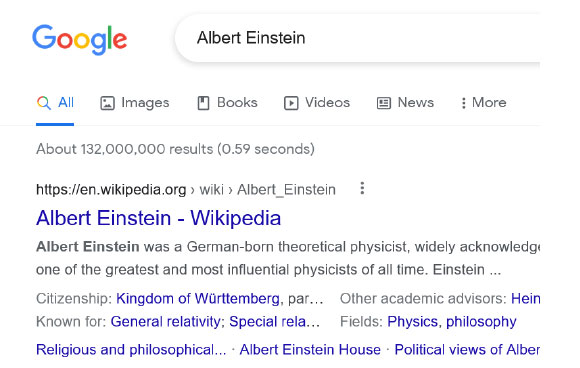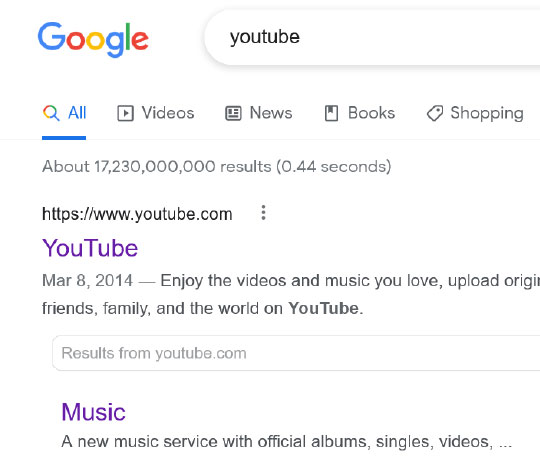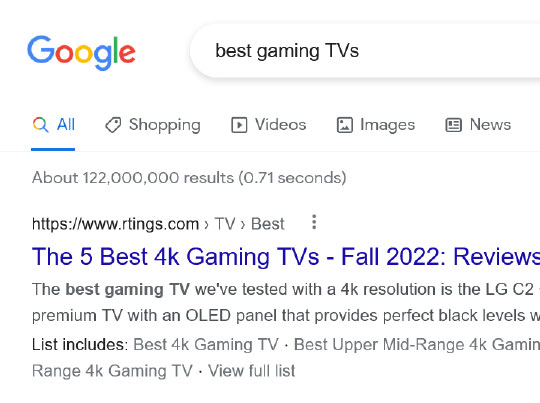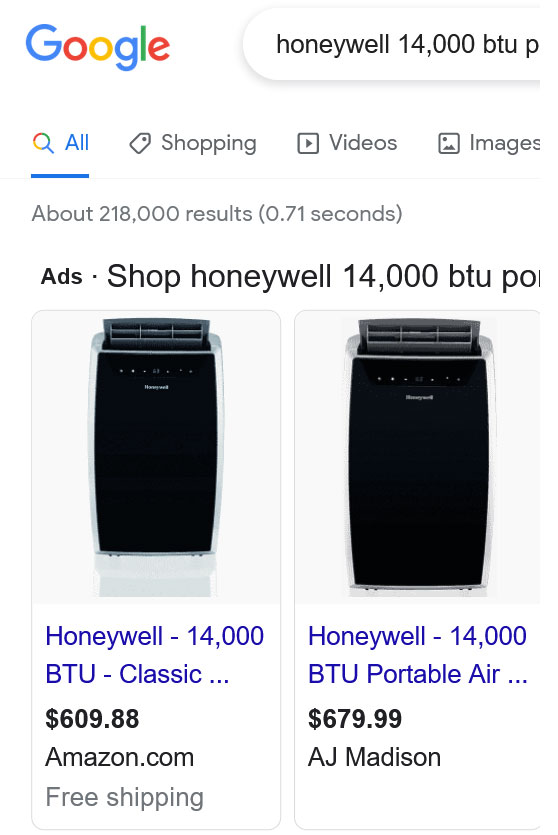In their never-ending effort to improve the user experience, Google has yet again updated its algorithm. This time around, they’re putting the spotlight on search intent above all else.
So, if you’re used to using old-school keyword tricks to drive traffic, it’s time to change things up with the quickness. Otherwise, you’re going to end up left up behind and scrambling to avoid getting blacklisted forevermore.
If that doesn’t sound at all like what you need in your life, you’ll be glad to hear that search intent isn’t so scary. In fact, all it entails is leaving the trickery behind in favor of focusing on what your audience truly needs.
Ready to make that happen by stepping into the future of content marketing? Here’s what you need to know about using search intent to guide your content creation efforts.
What is Search Intent – and Why Does It Matter?
Although it sounds complex, search intent simply reflects the purpose of the search. More precisely, it’s the reason someone would bother to type their query into Google and hit go.
It’s true that sometimes people will perform a search just to see what comes up, but that’s not all that common. More often than not, searches start with a precise goal in mind whether it’s learning why a car won’t start or just looking for the latest cute cat videos.
Since their Panda update, if not earlier, Google has tried to prioritize search intent. They want their search engine to bring up the results that fully satisfy the query in one shot, after all. Despite that desire, their algorithm couldn’t outsmart the keyword trickery dreamed up by wily content creators. Keyword stuffing and other digital deceits kept low-quality content rising to the top as a result.
Fortunately, all that’s set to change thanks to the Google Helpful Content Update, which finally makes the user experience a top priority by putting the focus on search intent. Surface-level content, AI-generated pages, and other less-than-helpful content will fall to the wayside as the algorithm gets to work.
So, if you want to rank high on the first page, you’d better be ready to fulfill each query by speaking to the search intent with quality content. Otherwise, you can kiss your chances goodbye. And if you miss the mark too often, Google may classify your entire website as entirely unhelpful, tanking your rankings across the board.
Most Common Types of Search Intent
To effectively use search intent to create quality content, you must understand the different types of queries you might encounter. Only then can you identify the intent behind each keyword and handcraft content designed to provide the best user experience.
The majority of queries fall under these four types of search intent:
Informational

As the name implies, informational queries come about from people looking for more info on a topic. They may want to better understand something, explore the life of a famous person, learn how to do a particular task, or just figure out the location of somewhere they want to go. With informational queries, users are not typically looking to make a purchase, sign up for something, or complete any additional steps online.
Examples of an informational search intent query include:
- Chris Hemsworth
- What are neutron stars
- How to teach a dog to fetch
- Where is the nearest library
- Fourth generation Nova
Navigational

People type in navigational queries to find a certain website, video, or other content on the web. When inputting these queries in the search engine, people already have their desired destination in mind. So, if you try to rank for the same terms, your website will undoubtedly fail to fulfill the search intent, resulting in a high bounce rate and poor user experience.
Examples of navigational search intent queries:
- Play QWOP
- Auralnauts birthday attack
- SpyFu login
- Washington Post
Commercial

Commercial queries serve as an important part of the buyer’s journey. People usually use these queries as they research products and services that could help them solve key challenges in their lives. As they learn more about their options, the users move ever closer to completing their transactions.
Examples of commercial search intent queries:
- Aftermarket mk2 VW parts
- Must-have products for cat owners
- Pros and cons of next-gen video game systems
- Most popular leggings for women
- Best air fryers in 2022
Transactional

People use transactional queries to find the products they want to buy right now. They already know what they want to buy but want to see which reputable brands offer the best deals. Sometimes, they may want to find the manufacturer’s product page, although great prices and fast shipping could draw them away.
Examples of transactional search intent queries:
- Spotify sign up
- Nintendo Switch Lite deals
- Get Our Universe Andor hoodie
- Buy Tokidoki Uno 2 shoes
- Purchase treadmill
How to Find Keywords with the Right Search Intent
To avoid getting dinged by Google, your content must always align with the search intent for your target keywords. So, you must take the time to assess all your keywords to determine their intent before you start writing.
To begin that process, simply complete keyword research for your brand. Start by grabbing keywords from your top competitors and organizing them into pillars that align with your brand offerings. From there, you’ll want to create an extra column in your spreadsheet for search intent. Then, simply look for the modifiers that reveal the search intent for each keyword and categorize the terms accordingly.
For example, you might mark all queries with “buy,” “get,” or “sign up” as transactional. “Best” and “must-have” indicate a commercial intent, while brand names alone are almost always navigational. On that same note, “What is,” “how to,” and “where is” point to informational queries.
You’ll still need to put yourself in the user’s shoes and reflect on what they could have possibly wanted from each query. If you’re stuck, search for the query in question and see what pops up. Would you be satisfied with the results? If so, then they’re likely on the right track and you can use their targeted search intent to categorize the term.
After you’ve categorized all your keywords, it’s time to pick out the ones to use for the content you want on your site. Then, you just have to do an excellent job answering the search query to ensure the algorithm ranks your page appropriately.
Best Practices in Optimizing Your Content for Search Intent
Although it’s easy to say, “Create quality content,” understanding just what that means is a whole ‘nother ballgame. In short, you have to strive to create the most in-depth, easy-to-understand content on the subject at hand to rank at the top.
You also have to have the reputation to back it up in the form of domain authority. Luckily, quality content and domain authority go hand in hand. As long as you’re creating quality content, you’ll likely gain the backlinks to raise your authority over time.
So, focus on the content creation process, first and foremost, by building pages that fulfill each search query in full. Here’s how.
Do a Search for the Keyword and Assess the Existing Content
Before you even outline your content, search for the target keyword and open the top five results. Then, check the intent and content quality to determine how you could do better.
Intent Match
Look at the content focus for each page. Does it match the most likely search intent for the query? If you were the user, would you feel like the page fulfilled your query and ended your search? If not, what’s missing?
As you answer those questions, you’ll quickly see how you could handcraft a better user experience. For commercial queries, for example, perhaps you could highlight product features, list the benefits, and link out to great deals.
Content Quality
Review all the content on each page next. Look at the overall layout and then dig into each section to see if it’s all it is cracked up to be. Keep the search intent in mind, so you can decide if the content aligns with the user’s likely expectations.
If you’re looking at great content, it’ll be easy to read, helpful, and scannable from start to finish. Beyond that, it must address the query in full without adding any fluff or otherwise feeling overwhelming, boring, or frustrating. Imagery and other multimedia should complement the content whenever reasonably possible, too.
Upon looking at these areas, it’s easy to see how you can outperform your competitors. After that, you just need to create quality content that addresses the search intent in full – and does it better than the rest on the first search engine results page for that keyword.
Create Content That Ends the Search Journey for Your Reader
Every query is different when it comes to what content will fulfill the search intent best. But if you follow these five rules, you’ll have the best chance at satisfying your reader’s desire for knowledge and support through the buyer’s journey.
- Set up a scannable layout with keyword-rich headers from top to bottom
- Adopt an inverted pyramid writing style that gets readers their answers fast
- Write in simple language that makes it easy to understand what you’re saying
- Add the target keyword sparingly and then naturally use semantic equivalents
- Use multimedia to offer the on-page content in a variety of easily digestible formats
So, now that you know the power of search intent in ranking high on Google search engine results pages, it’s time to get started on your content creation journey.
Practice makes perfect, so don’t be afraid to jump in there and try your hand at creating the best content for each keyword. Over time, you’ll hit on what works and what doesn’t, helping you streamline your approach and improve your results.
